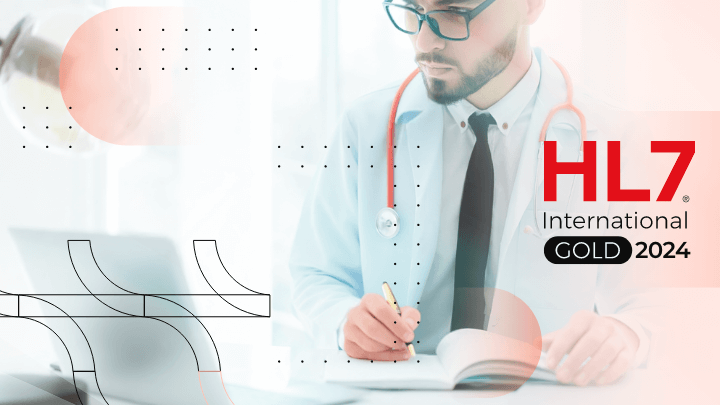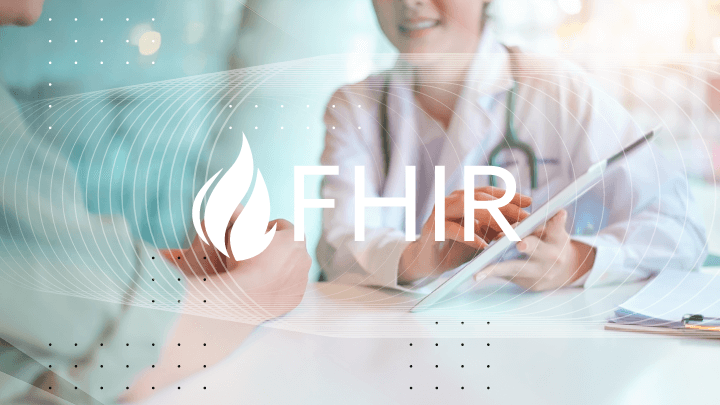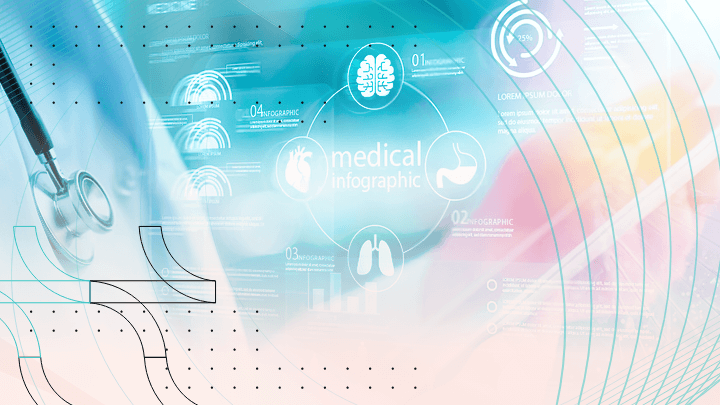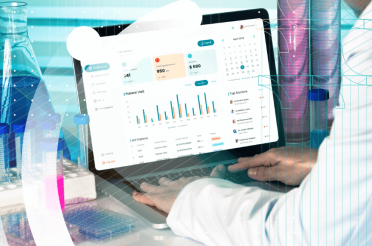Healthcare systems mostly depend on the smooth flow of electronic health information in the current digital health environment.
In order to accomplish this, Health Level Seven (HL7) standards provide an organized framework for data interchange between various healthcare applications.
For software developers, healthcare providers, and other organizations looking to improve patient care and cut down on administrative work, these primary standards are essential. In this article, we will examine the main features of HL7 standards, their background, the different versions so far, and how they are influencing healthcare in the future.
What is HL7: an introduction
Health Level Seven International (HL7) is a global authority that establishes standards, formats, and guidelines for the exchange and creation of electronic health records (EHRs). HL7 standards are widely accepted in the healthcare IT industry as the standard for promoting data interoperability.
To further improve interoperability in the healthcare IT industry, the HL7 community has pushed Congress to enact stronger legislative standards.
In health information technology, HL7 is the most popular and well-known syntactic standard. The OSI (Open Systems Interconnection) model is a conceptual model that describes and standardizes interactions within a computer system independent of its underlying technology. It is what the term “level 7” alludes to. The OSI model’s 7th layer describes application-layer operations, which usually include coordinating computer systems’ communications.
Moreover, HL7 works as an event-based system where messages are sent when certain healthcare workflows occur. These actions can include patient registration, hospital discharge, or the completion of lab tests. The receiving system interprets the message and responds based on its type.
For example, an A01 message shows that a patient was registered, and the system might retrieve the patient’s information from other sources. If the message is a lab result, like an ORU message, the system can notify a clinician or take further actions, such as starting an infection control process. (1)
Simply put, HL7 is a non-profit organization that:
- Is committed to developing standards for the exchange of electronic health care delivery data;
- Is a set of international standards used to transfer and share data between various healthcare providers;
- Helps create a bridge between health IT applications;
- Makes sharing healthcare data easier and more efficient if we compare it to older methods.
After the introduction, we will examine the development of HL7 standards, their brief history and how healthcare interoperability has been impacted, from its inception to the newest developments like FHIR.
History of HL7 standards
HL7 is a range of global standards that was established in 1987 and has members from over 50 nations.
In 1994, the American National Standards Institute granted its accreditation. It creates new standards through a multi-year voting process where members cast their votes. Through them, they provide criticism in progressively more rounds of voting until all negative remarks are removed and draft standards for trial use (DSTU) are widely accepted.
HL7 Standards were created with the intention of establishing a single standard for the interchange of healthcare data. Their main goal was to help healthcare providers and their systems communicate with each other, but it soon gained popularity as one of the most extensively used frameworks.
The first major release, HL7 Version 2.x, revolutionized electronic health records (EHR) and healthcare information systems by enabling effective data sharing across various healthcare institutions. Newer versions and solutions such as HL7 Fast Healthcare Interoperability Resources (FHIR), which is essential to contemporary healthcare data sharing, have been introduced as HL7 has developed over the years.
Prior to HL7, healthcare institutions relied on incompatible proprietary systems that resulted in inefficient patient care. The HL7 community started creating protocols with the main goal of achieving interoperability between healthcare systems after realizing the need for standardization.
At first, they concentrated on making the interchange of clinical and administrative data easier. HL7 has become a key component of healthcare IT worldwide thanks to the continued global expansion, partnerships with international health organizations, and standardization efforts. The organization supports simple messaging, complex data and programming structures, and advanced web applications like healthcare interoperability resources (FHIR).
HL7 organization structure
With operations in more than 55 countries worldwide, the HL7 organization is a standards development organization (SDO). This means that it involves a wide range of stakeholders, including software developers and medical specialists, and behind its essential goal is to work globally.
The organization includes working groups focused on clinical data, administrative systems, and software standards development. These groups collaborate to ensure that HL7 standards meet the necessary technical specifications for seamless global integration of healthcare information systems.
HL7 is able to develop standards that not only facilitate medical transactions, but also optimize patient care delivery throughout various healthcare processes. This is all possible thanks to its extensive network and partnerships with healthcare organizations and software developers. It is organized into numerous technical steering committees, workgroups, and task forces, each of which is in charge of a particular area of healthcare IT, and is overseen by a Board of Directors.
The technical committees are responsible for creating and preserving particular HL7 standards, including data interoperability, clinical documents, and messaging. These groups work together to make sure the standards satisfy the changing requirements of healthcare systems. They are composed of subject matter experts, software vendors, healthcare providers, and other stakeholders.
The clinical interoperability council
The Clinical Interoperability Council (CIC), for instance, works on standards like the Clinical Document Architecture (CDA) and is focused on clinical workflows and data interchange.
The organization collaborates with healthcare providers to develop and refine standards for practical use in clinical settings, such as clinical summaries, care plans, and discharge records.
The infrastructure and messaging group
Maintaining the core HL7 messaging standards, including HL7 Version 2.x and Version 3, is the responsibility of the Infrastructure and Messaging group.
This significant workgroup ensures compatibility with other healthcare applications. In order to guarantee that healthcare applications can interact with each other and with various platforms and technological contexts, they also concentrate on the creation of more advanced messaging protocols.
The fast healthcare interoperability resources (FHIR) standard
A dedicated FHIR workgroup within HL7 is also responsible for developing and maintaining the Fast Healthcare Interoperability Resources (FHIR) standard. It is required for modern healthcare applications such as cloud-based solutions and mobile apps.
The FHIR standard is designed with modern technology in mind. It uses APIs to simplify and speed up data sharing between healthcare systems, especially for web and mobile applications. Its modular architecture allows healthcare organizations to adopt only the necessary components. This makes it highly flexible and adaptable to various healthcare processes and technological infrastructures.
HL7 extends and improves its standards through organized committees and workgroups. These groups ensure the standards remain relevant and useful for facilitating the exchange of healthcare data and enterprise across national borders.
HL7 version 2.x
Within the HL7 architecture, HL7 Version 2.x is the most established and extensively utilized standard. It makes it possible for medical professionals to exchange and retain clinical and administrative data, such as financial management records, test results, and patient information.
Because of its versatile message-based format, HL7 Version 2.x may be tailored to meet the requirements of various healthcare providers and organizations. Because of its broad use and dependability, HL7 Version 2.x continues to be a pillar of data exchange for healthcare providers even in the face of newer versions.
Version 2.x has several important features, such as patient administration, observation reporting, and trigger events such as alerts for admission, discharge, and transfer.
Here are five revolutionary contributions introduced by HL7 Version 2:
- Message-based data exchange: Healthcare applications were able to exchange clinical and administrative health data in real-time through the flexible message-based system created by HL7 Version 2, which made it possible for seamless exchange between various healthcare enterprise systems.
- Trigger event model: The standard established the idea of trigger events. They significantly improve workflow automation by automatically generating and sending messages in response to certain healthcare occurrences, such as patient admissions, discharges, or test results.
- Segmented data structure: Data was arranged into segments and fields by HL7 Version 2, which improved speed and clarity by standardizing and separating various sorts of information, including different data types – patient identity, observations, and billing data.
- Flexible and adaptable format: Its adaptability made it extensively relevant across a range of healthcare contexts by enabling health care organizations to tailor and adapt message formats to their unique needs while retaining essential interoperability.
- Widespread adoption: HL7 Version 2 became the most frequently used standard for healthcare messaging worldwide because of its simplicity and convenience of use. It also served as the basis for many healthcare information systems and paved the path for later versions.
HL7 Version 2 has significantly advanced healthcare interoperability with features that enhance communication across various systems. It integrates real-time data exchange with automated workflows to boost the efficiency and accuracy of healthcare delivery.
HL7 version 3
HL7 Version 3 offered greater precision in data structure and semantics and was created to solve some of the shortcomings of Version 2.x. This edition offers more clarity in the representation of healthcare data by utilizing a thorough model-driven approach.
The third version offered a more formal and structured method of healthcare data transmission. In contrast to Version 2.x’s adaptable but imprecise messaging strategy, Version 3 used a model-driven approach founded on the Reference Information strategy (RIM). By standardizing the fundamental structure of health data, the RIM guarantees uniformity and understandability among various healthcare systems.
For example, HL7 Version 3 specifies all transferred data according to precise data models, which removes ambiguity and ensures consistent interpretation across different systems. This is rather important in complex healthcare settings where misinterpretation or poor communication can lead to errors in patient care.
The Clinical Document Architecture (CDA) is one of the major innovations of Version 3. Healthcare organizations use this common format to exchange clinical records like radiology reports, progress notes, and discharge summaries. This format ensures that, regardless of the originating system, all documents maintain a consistent structure and content. This consistency makes patient information easily accessible and understandable to healthcare providers.
To enhance care continuity and reduce misunderstandings, a hospital in one country might use HL7 Version 3 to create a CDA-based discharge summary. A clinic in another country can then access and use this clinical information. CDA ensures that document standards conform to established clinical practice, data type specifications, and norms, aiding in regulatory compliance.
This standardized approach improves healthcare by enhancing data uniformity and exchange. Additionally, being closely linked to international standards, Version 3 facilitates seamless data exchange on a global scale.
HL7 fast healthcare interoperability resources (FHIR)
FHIR was designed for easy adoption by software developers to encourage widespread use across various development groups. It uses well-known standards from industries outside healthcare to streamline real-time interoperability and speed up application layer development.
Because it is compatible with modern healthcare systems and builds on previous standards like HL7 v2 and CDA, FHIR enables seamless integration with existing provider processes. This approach supports better healthcare through improved data sharing and system integration.
A RESTful API framework serves as the foundation for FHIR (Fast Healthcare Interoperability Resources), which facilitates effective data transmission via “Resources,” or specified data categories like patient information.
These resources can be used separately or in combination to suit common healthcare use cases, allowing for exact data extraction without processing of complete documents. A Patient Resource, for instance, might allow queries to return just pertinent data while still containing necessary demographic information like name and address.
FHIR’s adaptability allows resources to be customized to specific needs and organized into Implementation Guides for use cases like patient-reported outcomes or provider directories. This flexibility enhances its applicability across a broad range of healthcare processes. Additionally, FHIR secures data with modern encryption and authentication standards, ensuring that private data remains safe and accessible only to authorized users.
In order to guarantee “semantic interoperability,” or smooth data exchange, FHIR incorporates reference categories to common terminologies, vocabularies, and codes. This limits the range of acceptable codes to maintain consistency and guarantees that the sender and recipient of healthcare data comprehend and interpret the information in the same way, supporting reliable data verification.
HL7 messaging and communication standards
The core of HL7 standards is the ability to transmit and receive communications between different healthcare systems. HL7 messaging standards, particularly versions 2.x and 3, define the structure and format for data interchange. Each message consists of segments, and separators such as the component and field separators are crucial for maintaining consistent data across systems.
For example, a message could include the patient’s name, birthdate, and medical record number, separated by these separators to ensure clarity. This structured format allows for clear interpretation and action on the data by various systems, including lab software, billing systems, and electronic health records (EHRs). It facilitates efficient health services and data sharing by maintaining uniform data across different platforms.
Order messages and observation reports are examples of HL7 messages that facilitate the smooth exchange of medical data, such as lab results and patient records. These messaging standards help healthcare organizations reduce administrative burdens by enabling real-time sharing and access to critical patient data.
For example, an ADT (Admission, Discharge, Transfer) message shares events like patient admission, discharge, or transfer between healthcare systems. Each message type is associated with specific trigger events, such as an A01 for patient admission, and ensures that relevant systems are promptly informed of significant clinical events. This integration aligns with the clinical document architecture standard, thus enhancing the efficiency and responsiveness of healthcare delivery.
Another of HL7’s strengths is its definition of various message types for different healthcare needs. For instance, ORU (Observation Result Unsolicited) messages handle the exchange of clinical results, such as lab tests. A lab sends an ORU message upon completing a test to inform relevant systems and healthcare professionals.
This ensures that critical results, like a positive infection test, are communicated effectively. Additionally, ORM (Order Entry) messages are used to manage medical information in orders, such as lab requests or medication prescriptions, further streamlining clinical processes.
HL7 implementation guides
HL7 Implementation Guides (IGs) are comprehensive manuals that offer step-by-step directions on how to implement HL7 standards for certain healthcare use cases.
The U.S. Core Implementation Guide, for example, is intended to assist developers and healthcare providers in implementing the HL7 FHIR standard in accordance with American legal requirements, including those stipulated by the 21st Century Cures Act.
This tutorial describes how to use FHIR resources to transmit clinical data, such as patient demographics, drugs, and allergies. It aims to guarantee that various systems can accurately interact while abiding by national norms.
The ePrescribing Implementation Guide serves as an additional illustration, assisting pharmacies and healthcare professionals in implementing HL7 messaging standards for electronic prescription procedures. Prescription formatting and electronic transmission guidelines are included, guaranteeing compatibility between pharmacy management software and standards development and the EHR systems.
This guidance ensures that doctors can issue prescriptions smoothly, improves efficiency, and reduces errors in the prescribing process. These guides are crucial for achieving interoperability, as they offer practical frameworks for applying HL7 standards across different healthcare providers, thereby reducing administrative burden in actual healthcare settings.
HL7 Conformance and Compliance
Healthcare applications and systems that comply with the technical requirements outlined by HL7 standards are said to be HL7 compliant. Conformance involves data transfers and communications between systems adhering to the precise formats, guidelines, and standards specified by HL7.
When transferring patient data, such as admission and discharge specifics, a hospital’s electronic health record (EHR) system needs to adhere to HL7 communications standards. This is necessary to guarantee that data is correctly interpreted and utilized by other systems, such as laboratory software or invoicing. Conformance profiles provide the format of various message types (such as ADT, ORM, and ORU) to guarantee proper data flow between systems.
Compliance with HL7 standards is essential to guarantee seamless integration and communication across various healthcare apps and lower the possibility of misinterpreted data. A laboratory information system (LIS) that follows HL7 messaging protocols can send lab results to an EHR system through an ORU message. This ensures physicians receive accurate and timely findings.
Failure to comply may cause data to be mistranslated or incorrectly structured, delaying patient care or resulting in administrative mistakes. In order to comply with regulatory obligations or to integrate with national health information exchanges (HIEs), many healthcare institutions must prove that they are in accordance with HL7 related standards.
Furthermore, healthcare businesses can test their systems’ conformity to specific HL7 standards with the use of HL7’s Conformance Testing Framework (CTF) – one of the tools the organization provides to facilitate interoperability and compliance. This framework verifies systems against pre-established conformance profiles to ensure that messages, such as patient updates or medication orders, are correctly structured and compatible with each other.
A healthcare organization might utilize the CTF for verification that the module conforms with HL7 Version 2.x or FHIR messaging standards. It can happen prior to implementing a new EHR module for prescription ordering in order to lower the risk of system integration problems.
Discover how we can help outsource Healthcare projects efficiently Speak to an expert today, and see how our on-demand IT talent and augmented teams can efficiently deliver value at every step of your roadmap.

Future Trends and Emerging Technologies
After going into great detail about the history, different versions and all the revolutionary contributions of the Health Level Seven (HL7) Standards, it’s also important to outline the future trends that are yet to develop and how they are going to change the healthcare industry.
Some of them include the following:
- Increased adoption of HL7 FHIR: As healthcare systems look for more effective, real-time data interchange, FHIR’s widespread acceptance will be fueled by its simplicity of integration with contemporary web-based and mobile apps. As telemedicine and mobile health technologies proliferate and improve patient care and cross-platform interoperability, this trend will be increasingly important.
- Global expansion of FHIR: FHIR’s importance in promoting international healthcare data interchange will grow as cross-border interoperability becomes a focal point of international cooperation. To guarantee that FHIR adjusts to various regulatory contexts and clinical requirements globally, ongoing work will be required.
- AI and Machine Learning Integration: To enable the smooth interchange of AI-generated insights, HL7 standards like FHIR are necessary for the integration of AI and machine learning into healthcare. This will make it possible for medical professionals to use real-time individualized treatment suggestions and predictive diagnostics.
- Improved Security and Privacy Measures: Future HL7 innovations will prioritize more robust security and privacy standards, including encryption and access controls, as healthcare data interchange expands. This will guarantee that private health data, like genetic or mental health information, is shielded from unwanted access.
In a nutshell, HL7 standards, especially FHIR, are a fundamental development in transforming global healthcare. Their integration with AI enhances real-time, personalized treatment. As healthcare data becomes more interconnected, robust security measures ensure patient confidentiality across all platforms.
Conclusion
In summary, HL7 standards have revolutionized how healthcare providers store and exchange data, providing a structured and efficient framework for smooth system communication. This evolution from the original HL7 to the current FHIR messaging standard has simplified the sharing of vital health information to enhance patient care and reduce administrative costs.
As healthcare processes evolve, HL7 remains a cornerstone of interoperability, particularly with the expanding use of FHIR, the integration of AI into clinical decision support, and stronger security protocols.
These advancements ensure that HL7 will continue to significantly shape health information systems, thus promoting better international data exchange and improving patient care.

















